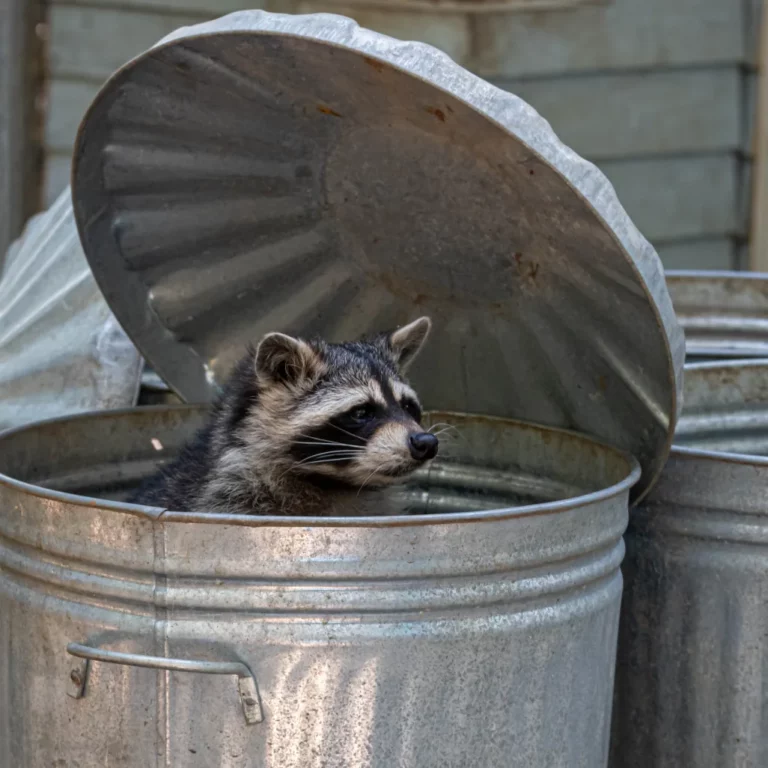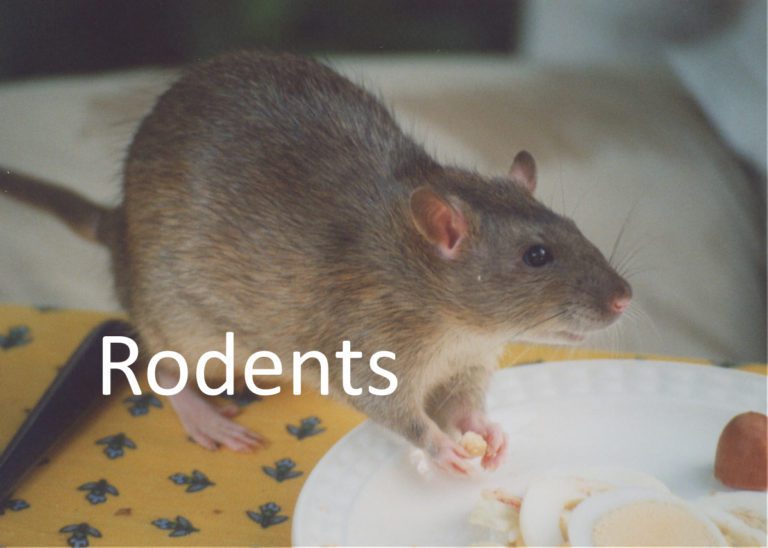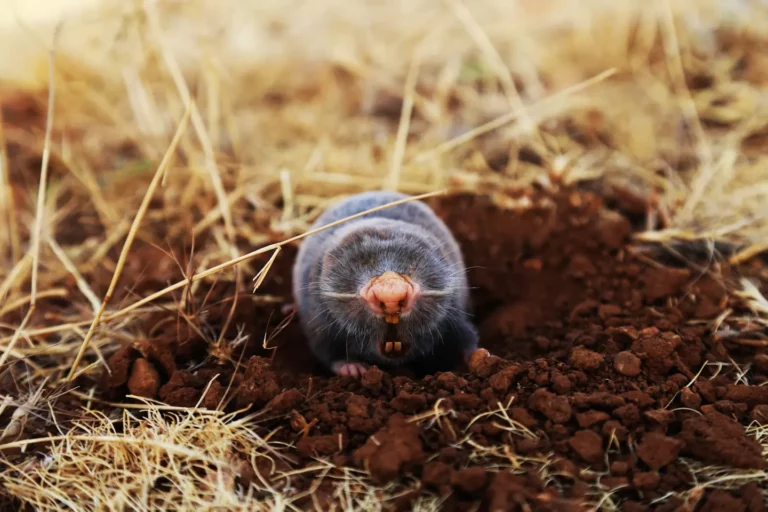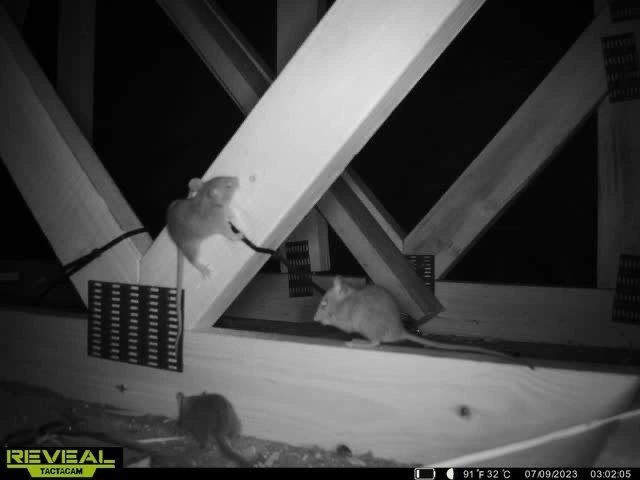Table of Contents
ToggleGroundhog Facts
If you see any chewed wood or plants, little heaps of earth near a burrow entrance, or other plainly chewed materials, it’s time to set a trap.
The groundhog’s remarkable burrows are the result of its strong claws. In order for groundhogs to keep up with their hectic eating habits during the summer months, their incisors develop by around 1/16 of an inch every week.
What is the Habitat and Diet of a Groundhog?
The only place you’ll find a groundhog is in North America, from southern Canada to central Texas. Burrows can be as long as 20 feet (6.1 m) and as wide as 6 feet (1.8 m), and these underground residences can have as many as two dozen entrances. To spend the winter, groundhogs dig their burrows in wooded regions that are adjacent to open, oily fields, and vice versa in the summer. These rodents feed solely on plant matter, making them herbivores. Fruit, plants, bark, and grasses are all acceptable parts of a groundhog’s diet.
Signs of Groundhogs
The destruction of crops and gardens by groundhogs is a telltale sign of a potential infestation. During the day, groundhogs rarely go more than 50 to 150 feet away from their burrow. Being solitary animals, groundhogs spend the warm months of the year eating and sleeping in the sun. During the winter, they go into hibernation and can devour up to a pound of food in a single session. Although they don’t eat at all during their hibernation, groundhogs get by on the fat they stored up during the warmer months. According to the National Wildlife Federation, a groundhog’s heart rate drops from 80 to 5 beats per minute, their breathing rate drops from 16 to 2, and their body temperature dips from roughly 99 to as low as 37 degrees F (2.77 C) during hibernation.
What Kind of Bait to Catch a Groundhog?
What kind of bait works best to lure a groundhog into a trap? Put no stock in the bait. More crucial is the positioning and setting of traps. If you want to catch groundhogs, for instance, place the trap on the runway that the animals use to go from their burrow to your garden and line the bottom with grass to make it look more natural. The groundhog’s favorite snack is probably the lettuce and tomatoes you’ve been missing from your garden, making them perfect bait. Groundhogs are attracted to lush green plants and sweet fruits; use a ripe, nutrient-rich meal or vegetable as bait if you’re not sure what to use.
Any animal trap with a compartment for bait will do the job, and this holds true for groundhogs as well as any other species. Even though there are numerous options for bait and food while trying to catch a groundhog, it’s important to keep in mind that there are many other factors that can influence whether or not you’re ultimately successful. It’s common to see gnawed-up garden veggies or fruit near a groundhog burrow, which can give you a hint as to what kind of bait might work.
Choosing The Right Bait
The difficulty in selecting bait arises from the fact that groundhogs, like humans, have different preferences in terms of what they find appetizing. Peas, lettuce, sweet corn, and string beans are some of the best vegetables for use as groundhog bait, while cantaloupe, strawberries, and beaches are some of the best fruits. Place these items in the trap such that the animal must activate the device in order to get the bait.
Choosing the correct bait can increase the likelihood of your trap catching the groundhog; nevertheless, there are other criteria that are more crucial.
How to Bait a Groundhog Trap
Positioning the bait in your trap correctly is just as important as the bait itself if you want to make a capture.
The most effective placing of bait will:
- The groundhog must be lured into the trap completely.
- To activate the device, the groundhog must first step on a trigger plate.
Expert Baiting Tips
Testing in the field showed that cantaloupe was the most effective bait for luring in groundhogs and woodchucks. Prepare a bait trail leading to the trap by cutting cantaloupe into 2″ cubes and rubbing the juice and rind all over the inside and exterior of the trap. Place part of the fruit in the place shown above.
You can catch a groundhog by setting up a trap approximately three feet from its burrow after you’ve baited the entrance with food.
Wearing gloves while baiting and handling the trap will prevent your scent from being transferred to the trap. If your trap carries your scent, the groundhog may avoid it.
Other considerations, such as trap setup and animal relocation, come into play when capturing a groundhog.
Using Poison Bait On Groundhogs
Poison bait is a method sometimes used to get rid of groundhogs, despite the fact that it is not actually bait and is not stored in a trap. The groundhog hole is simply coated with granules of a fatal poison, and many groundhogs will consume them because of the appealing smell. The difficulty with using poison bait is that you have no idea where the groundhog’s corpse will be located, and if it ends up near your house or in the burrow, you may be able to smell it but not be able to remove it, attracting other unwanted critters.
The Importance Of Trap Location
The location of a groundhog trap is more significant than the bait it contains in determining the trap’s success. Position the trap about six feet away from the burrow’s entrance hole for the greatest results. If the burrow has more than one entrance, setting up many traps can boost your chances of capturing the groundhog rapidly. Washing down traps with water to remove human scent is recommended, as is concealing at least part of the trap in a shrub or under a low-hanging tree to prevent the animal from becoming suspicious.
Can You Trap Successfully Without Bait?
Knowing that bait is not always required in a trap to effectively catch a groundhog is one of the most crucial facts you need to know while setting traps for the animal. Remember that groundhogs have powerful front teeth that may easily cut through the thinner wires of a cage, and that most traps will only have one or two doors. If you’re new to trapping, I recommend starting with a one-door trap and setting it up near the animal’s access point. While bait isn’t required to solve the problem, it can improve outcomes when used in conjunction with the other components.
Alternative Methods Of Dealing With Groundhogs
Although trapping is the most typical strategy for removing groundhogs from your property, there are other other options to explore. If the groundhog’s burrow entrance is close to a fence, you can try building a tunnel over the hole with chicken wire and a one-way funnel at the end to get the animal out of your yard and garden. Groundhogs can be kept out of your garden with the help of a few key elements, the most significant being a good fence. If the fence is constructed of steel mesh and is set into the ground about six inches, the groundhog will have a harder time digging under it.




